- Home
- How edtech can motivate all your pupils
How edtech can motivate all your pupils
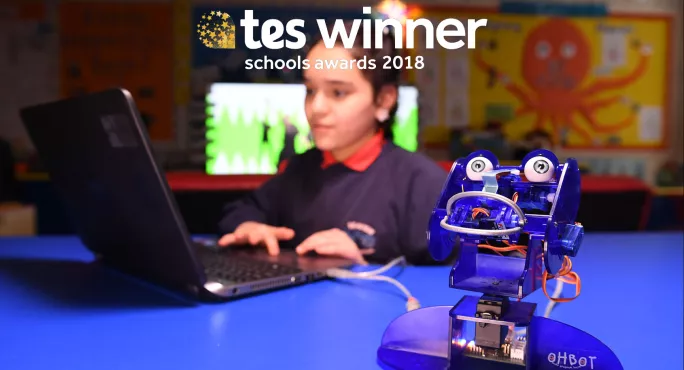
When Corinne Latham went to Estonia to learn how its schools make the most of technology, she was surprised to discover that she was something of a minor celebrity.
It was three years ago when the principal of Seaview Primary in Belfast was recruited as a last-minute replacement for officials from Northern Ireland’s collapsed government on the British Council-funded study visit.
“Whenever I walked into a few of their classrooms, they were like, ‘Oh yeah, I know you,'” she laughs.
“I was like, ‘You do?’
"It took me half the trip to think how on earth they knew me, but then one brave lady did say, 'Ooh, we’ve all been watching your videos.'”
The videos that had proved so compelling to schools a thousand miles away were Seaview’s YouTube tutorials on ICT excellence.
This unexpected popularity on the other side of the continent is just one indication of why this school, in one of the most deprived areas of Northern Ireland, won last year’s Tes schools award for innovative use of technology to influence outcomes.
Anything but traditional
From outward appearances, Seaview looks like the epitome of a traditional school built in the 1930s.
A linear two-storey building constructed around a courtyard, it sits among rows of red-brick terraced houses in the north of Belfast.
Below it to the south lie the city’s shipyards, with their iconic Samson and Goliath gantry cranes. Above it, to the north, looms the rocky outcrop of Cave Hill. Both the cranes and the hill are prominent on the school’s logo on its website.
But inside, Seaview is anything but traditional.
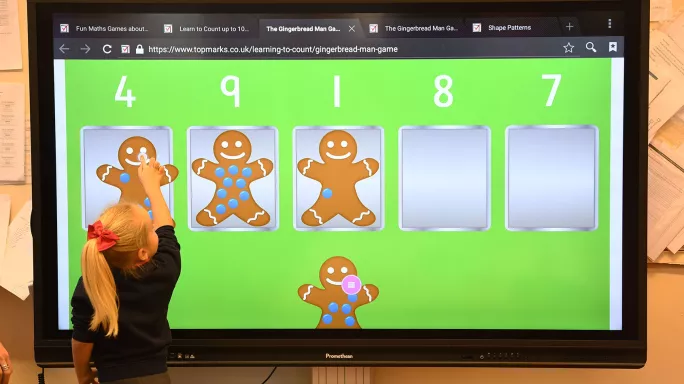
In an airy ground-floor classroom, edtech is effortlessly integrated into the activities of the four- and five-year-olds.
At a low table, some are busy colouring in penguins on worksheets, before making them come to life using augmented reality app Quiver on their iPads.
Tes awards: The school of the year 2018
Tes awards: 'Maths geek' made her subject cool
Tes awards: Best international project
In a plastic pit designed for sand or water, youngsters instead use an iPad to manoeuvre a Sphero ball through dollops of paint.
And a boy and girl patiently take turns playing a game with gingerbread men on the huge interactive screen at the front of the room, helping them with their counting.
Elsewhere, Year 2 pupils record podcasts, Year 4 pupils build robots that make use of Lego, while Year 5 use Edison robots for programming and green screen technology to make films.
Read the school's tips on using technology here
Edtech: not just the new fad on the scene
But do not make the mistake of thinking that this is technology for the sake of technology.
Latham’s approach, as principal, is the distillation of years of experience of education research, school improvement work and hands-on teaching and leadership.
During her first year in teaching, she decided to also – “very foolishly”, she admits ruefully – undertake a master’s degree in computer-based learning.
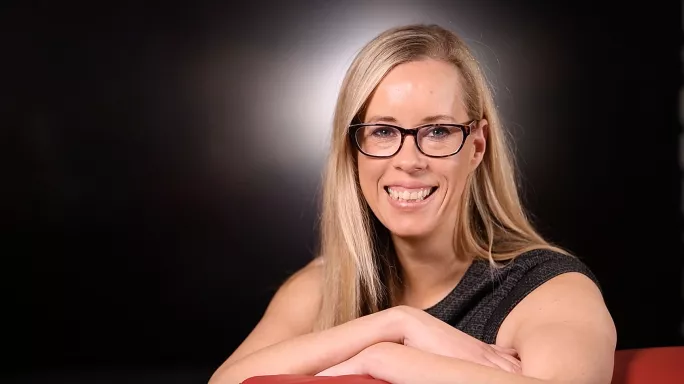
“We were designing ICT tasks that work well in the classroom,” she recalls, “and complement thematic learning, like the world around us – history, geography – and pull that together so that we had a better focus for our young people.”
She then worked in one of the five education and library boards the province then had, helping schools to embed this new curriculum and train their staff.
“I did a lot of work showing people how to use technology, and thinking about the bigger picture – how do we plan something, how do we make sure something is good on paper before we give the children the technology, and then how do we give them opportunities to evaluate what they have done to be reflective and to really draw out that deeper level of thinking?”
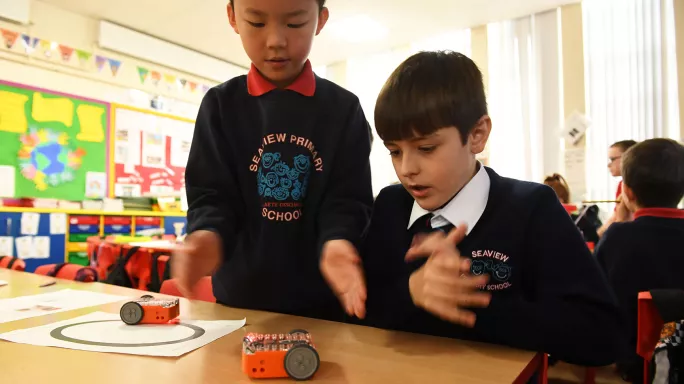
Next, she moved into headship, first at the independent Wallace Preparatory School in Lisburn, and then Seaview.
Given this background, it is no surprise to hear Latham describe herself as a “self-confessed educational geek”.
She says that her passion for pedagogy ensures that the children in her care “tend to have experiences that have been wel- thought-out as opposed to the new fad that has just arrived on the educational interface”.
Using technology to build relationships
When Northern Ireland’s Education and Training Inspectorate last visited the school, in October 2017, the inspectors praised its use of technology.
The report said that school’s strategy for the appropriate use of technology had “enhanced learning and teaching”, with pupils’ “very good” range of ICT skills preparing them to both work independently and collaborate effectively with their peers.
And when it came to the Tes awards, the judges were particularly impressed with evidence that Seaview’s approach to technology had helped to improve attendance and results.
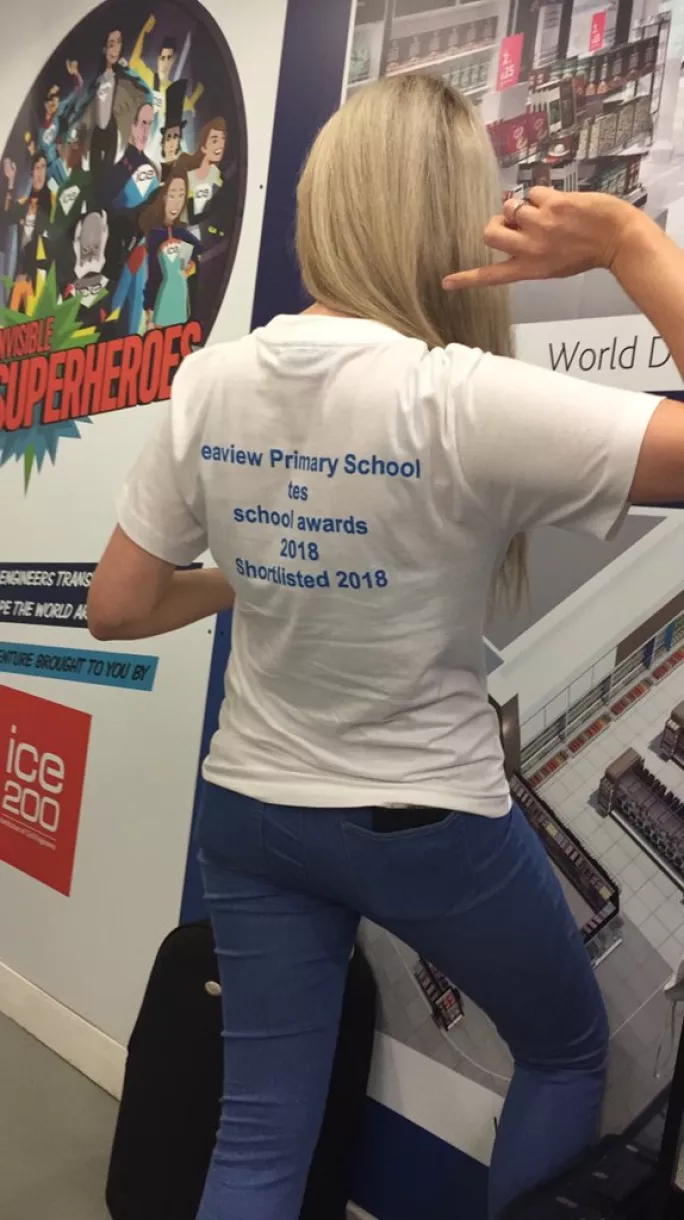
For Latham, technology did not do this directly, but by helping staff at the school build better relationships with, and understanding of, individual children.
“What technology can enable you to do is to motivate children to have exciting things in the classroom that they want to learn about.
“When you are using technology to look at how a child is performing, you can identify where they are on the page, how they are feeling about school, underlying issues that they may have through the use of assessment.
“You put those things together and you start building relationships.
“The use of Sims and that type of software has enabled us to drill deep down into who these children are, the type of home backgrounds they come from, and to make them feel important individuals.
“If they are having problems regulating their feelings, we have been able to put in technology like the Mindfulness Dojo to help them self-regulate, or bring them to safe spaces where they can let loose and do the GoNoodle dances and just get the blood circulating to the brain.
“Sometimes technology just enables those things, and helps to do things better, and help us identify who these wee ones are.”
Giving everyone 'an equal platform to do well'
The school sits in north Belfast, between Mount Vernon and Tiger’s Bay – two areas that Latham describes as synonymous with deprivation.
“Some of the children do have very difficult home lives, and other children have very happy home lives. There is a real contrast here,” she says.
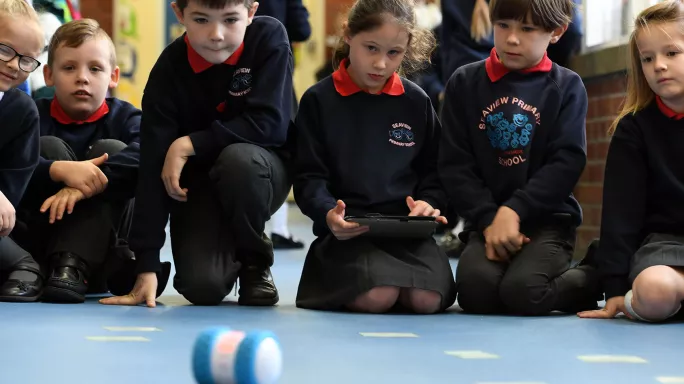
But despite being a community where children will have very different access to technology at home, Latham sees the use of ICT as something that levels rather than divides pupils.
Facilities in the wider community are vital, with a lot of children going to the library after school to complete online tasks.
The school also trains parents whose only piece of tech may be a smartphone about e-safety and apps that their children can use.
“While some of them may live in impoverished backgrounds, they do have equitable access to the use of technology, by hook or by crook, in the community,” Latham says.
And she has concrete examples of how using ICT can give everyone an “equal platform to do well”.
Latham recalls a young boy who was not performing as well as his age suggested he should in numeracy and literacy, but who was transformed by the arrival of micro:bits at the school.
“This little boy who wouldn’t have been top of the class – might not even have been middle of the class – took the micro:bit and was able to figure out through his own problem-solving how to work it.
“He was able to have a message running on it and he was then able to peer-mentor the other children in his class.
“Suddenly he went from a boy who looked like he didn’t have much to bring to the party to the boy who was the person who was in charge of the party. He knew everything that was going on.”
'The impact on the children was just amazing'
Pupils and teachers alike seem enthused by the school’s use of technology.
Year 1 teacher Robyn McKee says her “mind was completely blown when I saw the amount of ICT that was happening” when she left university and joined the staff of Seaview.
“I very quickly got into the way of using technology every single day in my teaching. The impact on the children was just amazing.
“Now I am using things like augmented reality, the Ohbot, GoNoodle, Dojo Mindfulness, and I couldn’t imagine teaching without it.”

Now, friends who teach at other schools ask her for advice about edtech.
And Year 4 teacher Lynn Murphy outlines how programmes such as a classroom app Learning by Questions help not just with teaching, but with workload.
It allows teachers to programme in questions for pupils ahead of the lesson, who then answer them on their devices during class.
As they are working on them, the teacher can track in real time how they are doing and quickly pinpoint problems, and gather those struggling with a particular question for a quick explanation.
“Whereas in the past you would have to be collecting the books in or going around desks, this is such a quick way to get immediate feedback and do something with it there and then, which is saving your time and lessening your workload,” she explains.
And when it comes to giving feedback to parents, teachers use an app called Seesaw. Each parent is connected to their child’s online portfolio, allowing teachers to send photos of great pieces of work, give feedback and send reminders.
The introduction of technology at Seaview did not happen overnight, and was carefully managed to keep the teachers on-side.
After she arrived as principal, Latham drew up a three-year development plan “of how we would step-by-step bring our teachers on to such a level that they created lessons where ICT was integral and not a bolt-on”.
Early morning “toast and technology” CPD sessions proved effective.
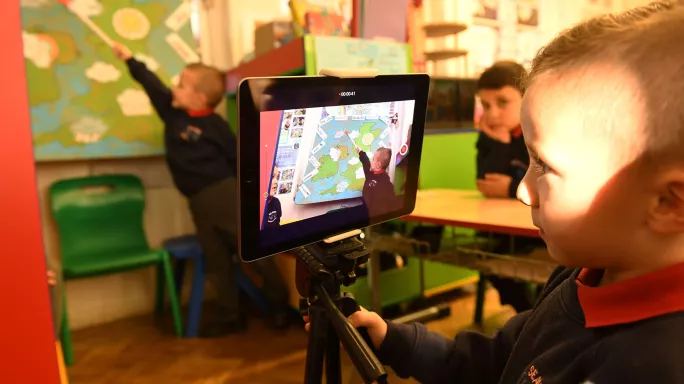
“While they were eating, I was explaining how things worked, so we went from things that were to improve [teachers'] wellbeing, to cut down their workload, to make them better teachers and to look after them, before we started introducing things like the coding side of things because it does take a lot of headspace and learning and trying things out,” says Latham.
Now, pupils nonchalantly explain to visitors the role of robots in their learning in a way that previous generations may have explained calculators.
One boy’s frequent use of the word “obviously” when outlining his use of augmented reality betrays how unremarkable this technology is to them.
And Farida, 9, says the Ohbot is her favourite piece of edtech because “it looks like a human and we can make it say stuff and do stuff”.
“Every time I use technology, I learn something new,” she says. “It makes me enjoy and learn more stuff. My friends think it’s really nice."
Embedding skills and confidence
There is something in the Northern Irish character, Latham believes, that means its schools can be “too shy to share” their successes.
But Seaview is keen to help others, and, as its unexpected popularity in the classrooms of Estonia shows, it has an eager audience.
It also uses Twitter to share best practice with other schools, and Latham has led ICT courses at other primary schools in north Belfast, and she is a trained facilitator with the British Council.
The positive role of technology in children’s learning is something Latham firmly believes in.
“For me, it is very exciting to see constant new things coming on board, and for us it is about making sure we get the right things that suit our children, and what suits our children may not suit another school in a different catchment.
“Certainly the depth of learning that’s going on here is, I think, deep and it is embedding a lot of skills and a lot of confidence in our young people.”
Keep reading for just £1 per month
You've reached your limit of free articles this month. Subscribe for £1 per month for three months and get:
- Unlimited access to all Tes magazine content
- Exclusive subscriber-only stories
- Award-winning email newsletters



